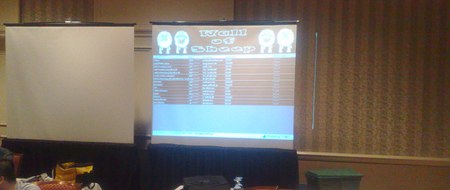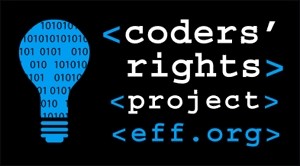
Black Hat 2008: What’s Next For Firefox Security



French reporters at Black Hat crossed the line when they sniffed fellow reporters’ login info on the designated “safe” wired network. Proud of their handiwork, they were nabbed when they tried to get their spoils posted on the wall of sheep, which is used to publicly post attendees credintials. It turns out that monitoring communications without informing one of the parties involved is a felony, so although it is legal to sniff convention goers’ login info with their knowledge, hacking reporters covering the event is a no-no. An FBI agent we ran into commented that in his experience, they’d probably just turn it over to the local US attorney’s office to see if they wanted to proceed with an investigation.
We’re in the Defcon press room today and there’s still a buzz about these “sleazy” French reporters. We’re tunneling through our cell connection like any sane person at a security conference.

The US Department of Homeland Security recently disclosed a new policy that allows agents to seize laptops, or anything capable of storing information, “for a reasonable period of time”. Okay, so this seems normal; A government agency is declaring they may confiscate personal property. However, the strange part of this story is that under this policy, federal agents can confiscate these things without any suspicion of wrong doing or any reason what so ever. So what happens to your personal data after they seize your laptop? Apparently they share the data with federal agencies, and in some cases the private sector, as additional services such as file decryption or translation are needed. While this may seem like a major violation of privacy, it is important to note that this policy only applies to people entering the United States. However given the direction that our federal government is moving in the area of security, it wouldn’t surprise me if this policy will soon apply for domestic flights as well.
[photo: postmodern sleaze]
[via eff.org]

The first night of Black Hat briefings concluded with the Pwnie Award Ceremony. The awards reward achievements in security… but mostly failures. Notably, this was the first year anyone accepted an award in person. Hack a Day took home an early victory by producing a MacBook mini-DVI to VGA adapter (pictured above). The ceremony was fairly straight forward after that. Best Server-Side Bug went to the Windows IGMP kernel vulnerability. It was a remote kernel code execution exploit in the default Windows firewall. The Best Client-Side Bug went to Multiple URL protocol handling flaws like this URI exploit. Mass 0wnage went to WordPress for many many vulnerabilities. Most Innovative Research went to the Cold Boot Attack team. Lamest Vendor Response was won by McAfee for saying XSS can’t be used to hack a server. The Most Overhyped Bug went to [Dan Kaminsky] for his DNS vulnerability. Most Epic FAIL was won by the team behind Debian for shipping the OpenSSL bug for two solid years. Lifetime Achievement Award was won by [Tim Newsham]. Finally, the Best Song was by Kaspersky Labs for Packin’ The K!, which you can find embedded below.

FasTrak is the electronic toll collection system used by the state of California. Motorists can purchase a toll transponder for ~$26 and link the serial number with a debit account to have their tolls deducted automatically. Today at Black Hat in Las Vegas, security researcher [Nate Lawson] presented not just the privacy problems with FasTrak, but why absolutely no transaction from the tag should be trusted.
Continue reading “Black Hat 2008: FasTrak Toll System Completely Broken”

The EFF has just announce the creation of the Coders’ Rights Project website at the Black Hat conference. The sites’ main goal is to centralize legal information for coders, and to help protect important security work from legal actions that may be taken against them with the DMCA and other legal black holes. While this is in no way a fully comprehensive list of everything you need to know, it looks like a good place to start, and provides a few FAQs for suggestions on how to stay in the legal clear as much as possible. At numerous points the documents suggest you speak with a lawyer, if you have any deeper questions, which you absolutely should. This can be very helpful if a person or group finds a security risk, and wants to publish it, or just wants to start looking into possible security risks.

[pdp] provides some perspective on the news regarding the GIFAR attack developed by researchers at NGS Software. As he explains, the idea behind the attack, which basically relies on combining a JAR with other files is not new. Combining JAR/ZIP files with GIF/JPG files will create hybrid files with headers at both the top and bottom of the file and allow them to bypass any image manipulation library as valid files. While tightened security and more stringent file validation practices are advisable, the problem is larger than just a vulnerability in browser security. ZIP is an incredibly generic packing technology used everywhere, from Microsoft files to Open Office documents, and of course, in JAR files. He closes with, “any file format that is based on ZIP, you allow your users to upload on your server, can be used in an attack”
[photo: Jon Jacobsen]